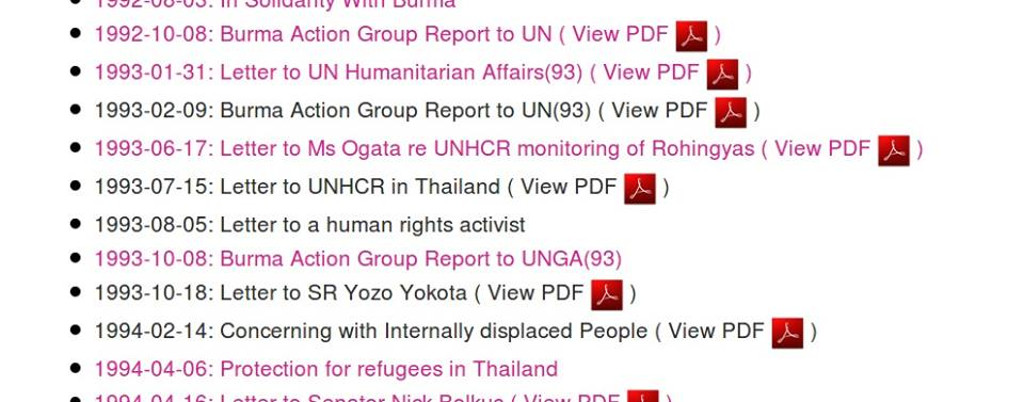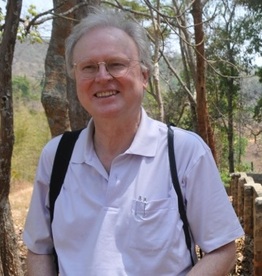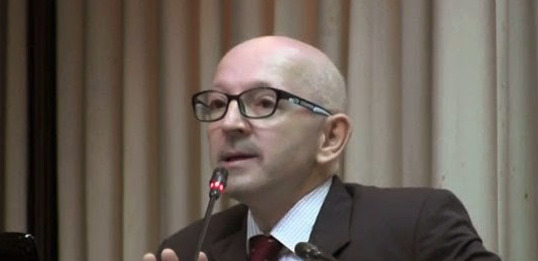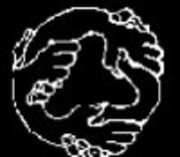What are the political issues ?
The Rohingya --political and apolitical narratives: As we've seen in previous page, the Jamiatul-Ulama (JU) of Northern Arakan (1932-1962) was responsible for creating a mythical ethnic group named "Rohingya". The Jamiatul-Ulama had invented "Rohingya" with the hope that the Muslim Community of Northern Arakan will be able to integrate into Burma's main-stream indigenous political groups, along with the aspiration for creating a separate state as their homeland within the Union of Burma. However, with the coming of military dictatorship in 1962, the political leadership of Jamiatul-Ulama had disappeared from the public scene, along with all other Burma's democratic groups.
Whilst the JU and its leadership might have disappeared from public, their hope and aspiration were found to have survived within their own community. To the new generations of that community, only so few would have known that the word "Rohingya" was an invented one. The younger generation genuinely believe the "Rohingya" is a true story. On the one hand, after 3 decades of military dictatorship, none of the Burmese have ever heard about the story of "Rohingya".
The plight of Muslim Community of Northern Arakan had received global attention after the Burmese military expelled them into Bangladesh in 1991. With the 1991 influx, the pro-Rohingya campaigners -- probably -- had their first break-through to the global media via an Asiaweek article in February 1992. That article had briefly described about the history of Rohingya, the note which can be compared with JU's first statement on Rohingya in 1948.
The Rohingya's political campaign
Encouraged by renewed global attention on the Rohingyas, Dr. Mohammad Yunus, the chairperson of Rohingya Solidarity Organisation had promoted an academic styled document named "A History of Arakan" in 1994. At that time, of course, the Burmese democracy activists outside and inside were busy with their own campaigns against the military dictatorship and no one appeared to have taken much notice about it. For myself, I had engaged in a brief campaign for the situation of Rohingya refugee along the Bangladesh-Burma border in 1991-1993, then just moved on to other areas.
| My initial engagement on Rohingya issues, 1993 |
|---|

|
The RSO's 1994 writing described the Rohingya as the natives of Arakan, and claimed they are the significant Islamic religious majority residing in Arakan since 788 AD. The RSO also claimed the Rohingyas had successfully developed their own language by infusing the Arakanese, Bengali, Urudu and some Arabic. The RSO rejected about the current Rohingya population are mainly immigrants from Chittagong/Bengal Area. Of course, in those days in 1990s, everyone had their eyes focussed on military junta and all anti-government groups had to fight the common enemy. These inaccurate claims made by RSO, even if any Burmese democracy activist groups might have found unsatisfactory, the activists were in no position whatsoever to correct or counter-balance those claims.
The Rakhine Community Reactions
Although the Burmese activists had found little reason to intervene RSO's inaccurate claims, the Rakhine community activists were being alert and sensitive to the RSO's political advances. Since mid-1990, there were publications by Rakhine community activists countering the RSO's claims. For example, in 2005 the late U Shwe Zan and Dr. Aye Chan had written Rohingya/Bengali immigrant situation in Arakan and, in 2009, Maung Tha Hla had written "Rohingya Hoax". These are just few examples of Rakhine community's political responses to RSO's spurious claims. By the time 2012, which I had turned around focussing on Arakan/Rohingya issues, these heated political debates by Rakhine and Rohingyas have already descended into the community mud-slinging sessions, accusing one as the liars and the others being racists.
The Academic Overview
Rohingya Issue by Professor Kei NEMOTO, 2005. |
|---|
(i) Islam reached Arakan before 788 AD and the Rohingyas have been residing there since that time. The history reconts that Arakan was the land where the Muslims lived as majority.From anti-Rohingya campaigners:
(ii) The Rohingyas are not the British Era settlers.
(iii) The Rohingya language was the original language in Arakan used by both Rohingyas and Buddhist Arakanese.
(iv) The Kingdom of Arakan -- the Mrauk_U dynasty, 1430-1785, was a Muslim dynasty in essence, though they had some Buddhist influence.
(i) The pro-Rohingya groups have abused the history of Arakan for political purposes, producing a false image of Arakan as if it was the land originally influenced by Islam;
(ii) The Rohingyas are not an indigenous ethnic group of Burma. They are direct descendants of immigrants from the Chittagong District of East Bengal in the 19th century. During the British colonial rule, they were classified as "Chittagonians" by the British officials.
(iii) It is illogical to speculate that (sizeable population of) Muslims have lived in Arakan since the ninth century. There is no record or documents of the crews of ship-wrecks in Arakan, so do any Arabs or Muslims.
(iv) Earliest Muslim settlers were those Bengali retinues of King Min Saw Mon in 15th century and their number were not many. Under Mrauk-U Dynasty, 1430-1784, the Muslim population were also minority. They consists of Bengali captives, mercenaries, itinerant merchants from Persia and Glokonda. Those people lived in Arakan since the early 17th century, spoke Arakanese dialect and never claim themselves as Rohingyas.
To be recognised here is that, the Burmese people -- the government included -- by and large have had the same outlook as that of Arakanese activists re: Rohingya issues.
Professor Kei Nemoto's crucial paper in 2005 had summed up the main points of contention as regards Rohingya issues. Our next step is to find ways to resolve these complex issues via an apolitical approach. To achieve this end, I would referred the following two landmark lectures on Rohingya, given by renowned journalist Martin Smith and Professor Jacque Leiders.
Lectures on Rohingya History |
|---|
 The 1995 Lecture by Martin Smith, "The Muslim Rohingyas of Burma". Martin Smith is a British writer and expert on Burma's insurgencies. In this lecture, he covered the history of Rohingya from early Arakan Kings, pre & post British colonization and right through the dictatorship of Gen. Ne Win. As such our readers can visualize the continuity of the developments of Rohingyas and, perhaps, gain insight knowledge on the struggles of this community. Although this historical lecture was delivered at Burma Centrum Netherland in 1995, to my view, it's still very much relevent today. This is because much inroads into understanding of the complexities of Rohingy issues have developed, at the researchers levels, only around 2012-2015.
You can download the lecture here at this link: The 1995 Lecture by Martin Smith, "The Muslim Rohingyas of Burma". Martin Smith is a British writer and expert on Burma's insurgencies. In this lecture, he covered the history of Rohingya from early Arakan Kings, pre & post British colonization and right through the dictatorship of Gen. Ne Win. As such our readers can visualize the continuity of the developments of Rohingyas and, perhaps, gain insight knowledge on the struggles of this community. Although this historical lecture was delivered at Burma Centrum Netherland in 1995, to my view, it's still very much relevent today. This is because much inroads into understanding of the complexities of Rohingy issues have developed, at the researchers levels, only around 2012-2015.
You can download the lecture here at this link:  |
 If you are looking, perhaps, for an un-biased and apolitical perspectives of Rohingya issue, this video lecture delivered in 2012 by Dr. J. Leider may be the best one. In views of Dr Leider, the Rohingya in Burma are mainly migrated after British colonization. He pointed out that, for centuries, the Arakan State has been cultural frontier for Buddhist and Muslim religions. Being historian, he views current conflict in Arakan primarily as the quest for identity by both Rohingya-Muslim and Rakhine-Buddhists. He views the Rohingya campaign (2012) as 'political movement' and notes the invention of Rohingya as historical identity basically is on a 'shaky basis'.
You can find the lecture delivered at University of Illinois in here: If you are looking, perhaps, for an un-biased and apolitical perspectives of Rohingya issue, this video lecture delivered in 2012 by Dr. J. Leider may be the best one. In views of Dr Leider, the Rohingya in Burma are mainly migrated after British colonization. He pointed out that, for centuries, the Arakan State has been cultural frontier for Buddhist and Muslim religions. Being historian, he views current conflict in Arakan primarily as the quest for identity by both Rohingya-Muslim and Rakhine-Buddhists. He views the Rohingya campaign (2012) as 'political movement' and notes the invention of Rohingya as historical identity basically is on a 'shaky basis'.
You can find the lecture delivered at University of Illinois in here:
|
| FAQ-01 || | FAQ-02 || | << FAQ-03 || | >> FAQ-04 || | FAQ-05 || |
|---|
